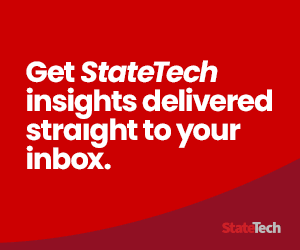Smart, open edge platforms are modular, AI-ready systems designed to transform how states and cities manage transportation networks and more.
These plug-and-play ecosystems offer the flexibility and capabilities agencies need to transform city operations, extend AI practically everywhere and elevate the citizen experience without ripping and replacing existing investments.
What Are Open Edge Platforms?
Open platforms, placed at the edge, are adaptable, modular technology systems that provide powerful compute capabilities at the local level and that evolve with an agency’s needs. Built on open standards, application programming interfaces (APIs) and flexible architecture, they allow state and local governments to seamlessly integrate new smart city tools with fast, powerful processing for common city needs without overhauling existing infrastructure.
Open platforms work by ingesting data from a range of sources — including edge sensors, internal applications and public portals — and analyzing it at the source while supporting advanced analytics in the cloud.
These adaptable platforms allow agencies to modernize incrementally, reusing what works, replacing only what’s necessary, and layering on advanced features such as real-time AI and edge orchestration (the back-end systems that help cities and counties manage fleets of edge devices).
RELATED: Balance speed and practicality at the network’s edge.
For example, with open edge platforms, transportation departments can seamlessly add new edge devices for smart intersections or incorporate AI into streetlights to collect data on public safety and air quality, all without ripping out what’s already working.
Open edge platforms also support newer technologies — such as 5G, edge AI and hybrid cloud — so, as cities modernize, their platform evolves with them. This protects investments and enables quick adaptation to new policies, funding options or security requirements.
Transforming Urban Life: Real-World Citizen Service Improvements
With AI at every data point, cities can quickly develop and deploy video and AI solutions to satisfy emerging use cases across cities, transportation and critical infrastructure.
For instance, using generative AI and agentic AI capabilities, traffic controllers can easily query sensors and data points across hundreds of intersections to trace vehicle movements and identify license plates and vehicle trajectories, supporting critical efforts such as criminal tracking and Amber Alerts.
Open edge platforms are already making a difference in citizens' lives, and the use cases are expanding:
- Emergency response. AI-enabled intersections reroute ambulances in real time after an incident.
- Smart parking. Open APIs connect sensors, apps and payment systems, increasing convenience and enforcement.
- Smart traffic signals. Open architectures power connected traffic signals, using AI and sensor data to optimize flow.
- Digital inspections. Mobile-first inspections update records instantly with photos and notes.
- Transit updates. Open data feeds power live updates via apps and dashboards.
- Air quality monitoring. Environmental sensors feed open platforms, informing city officials and residents of real-time conditions.
Texas Eyes Open Edge Platforms to Make Roads Safer
Open edge platforms are already addressing challenges and helping states stay at the forefront of technological advancements. One notable example is the Lone Star State.
As part of its Road to Zero goal of eliminating roadway fatalities by 2050, the Texas Department of Transportation and the University of Texas at Austin’s Center for Transportation Research are piloting an intelligent traffic management system based on a modular, edge-AI platform.
This system facilitates vehicle-to-infrastructure communication by analyzing traffic camera feeds in real time with powerful processing at the edge to detect incidents such as stalled vehicles and wildlife. When a hazard is detected — such as an accident beyond the line of sight — drivers are alerted, averting further incidents and enhancing safety.
SUBSCRIBE: Sign up for the StateTech newsletter for weekly updates.















